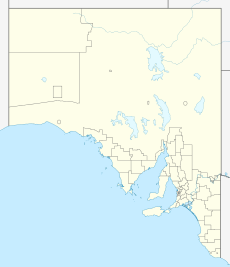Matta Flat, South Australia facts for kids
Quick facts for kids Matta FlatSouth Australia |
|||||||||||||||
|---|---|---|---|---|---|---|---|---|---|---|---|---|---|---|---|
| Postcode(s) | 5554 | ||||||||||||||
| LGA(s) | Copper Coast Council | ||||||||||||||
| State electorate(s) | Narungga | ||||||||||||||
| Federal Division(s) | Grey | ||||||||||||||
|
|||||||||||||||
| Footnotes | Coordinates | ||||||||||||||
Matta Flat is a small area, or "suburb," located near the town of Kadina in South Australia. It's found on the Yorke Peninsula, a piece of land surrounded by water on three sides. Matta Flat is part of the Copper Coast Council, which is the local government for the area. Even though its official boundaries were set in January 1999, people had been using the name "Matta Flat" for this area for a long time before that.
Contents
A Look Back in Time
The Matta Matta Mine
Matta Flat has an interesting history, especially because of a place called the Matta Matta Mine. This mine was active from 1860 to 1870. During this time, miners worked hard here to dig up valuable copper.
Clever Drainage System
Because Matta Flat is a low-lying area, water from the mine could cause problems. So, in the 1860s, the mining company built a very clever "underground drain." This special drain helped to remove extra water that seeped out of the mine. It kept the area from getting too wet.
Matta House: A Manager's Home
Close to the mine, a special house was built for the mine manager, Edward Austin Horn. This house is called Matta House. Today, Matta House is looked after by the National Trust of South Australia. It's now part of The Farm Shed Museum, where visitors can learn about the history of the area.
Growing Community Needs
After the mine closed, more people wanted to live near Wallaroo Mines, another important mining town nearby. To help with this, in 1871, the Matta Flat area was surveyed. This meant it was measured and divided into "occupation blocks," which were plots of land for people to build houses on.
Changing Landmarks
Over time, some old mining structures were taken down. For example, the Matta enginehouse chimney was demolished in May 1932. This made some local people sad, as they felt important landmarks were being lost.


